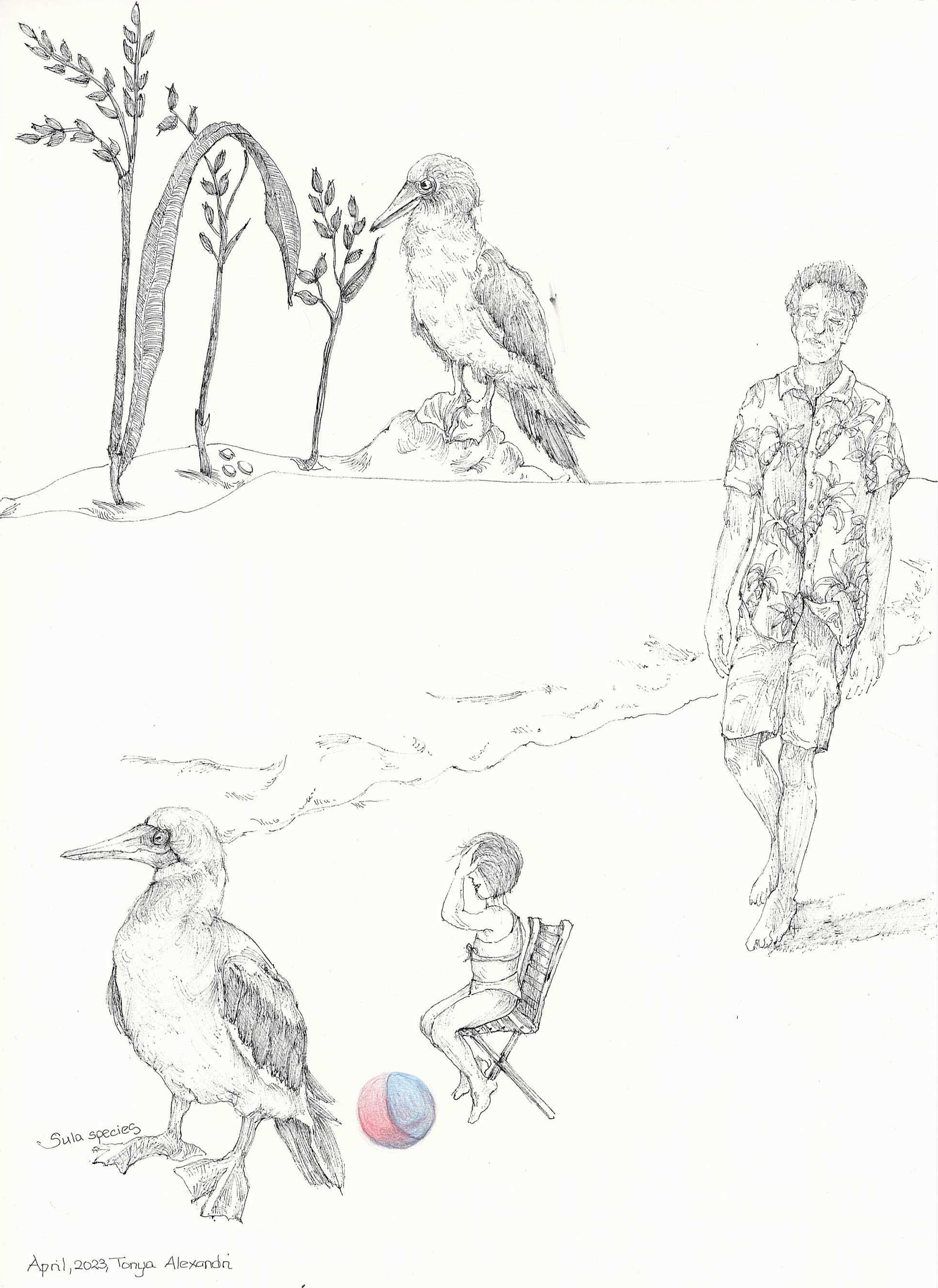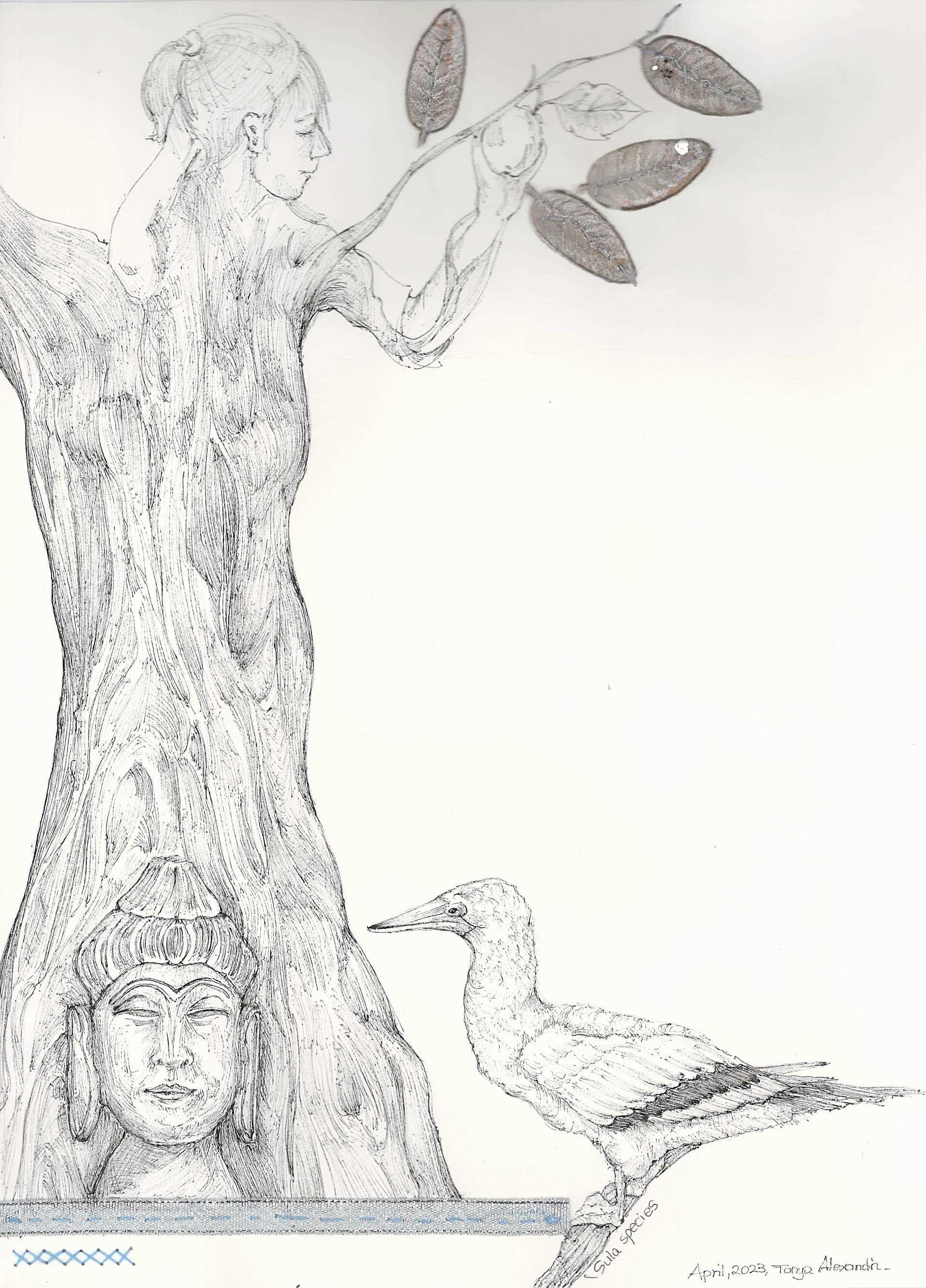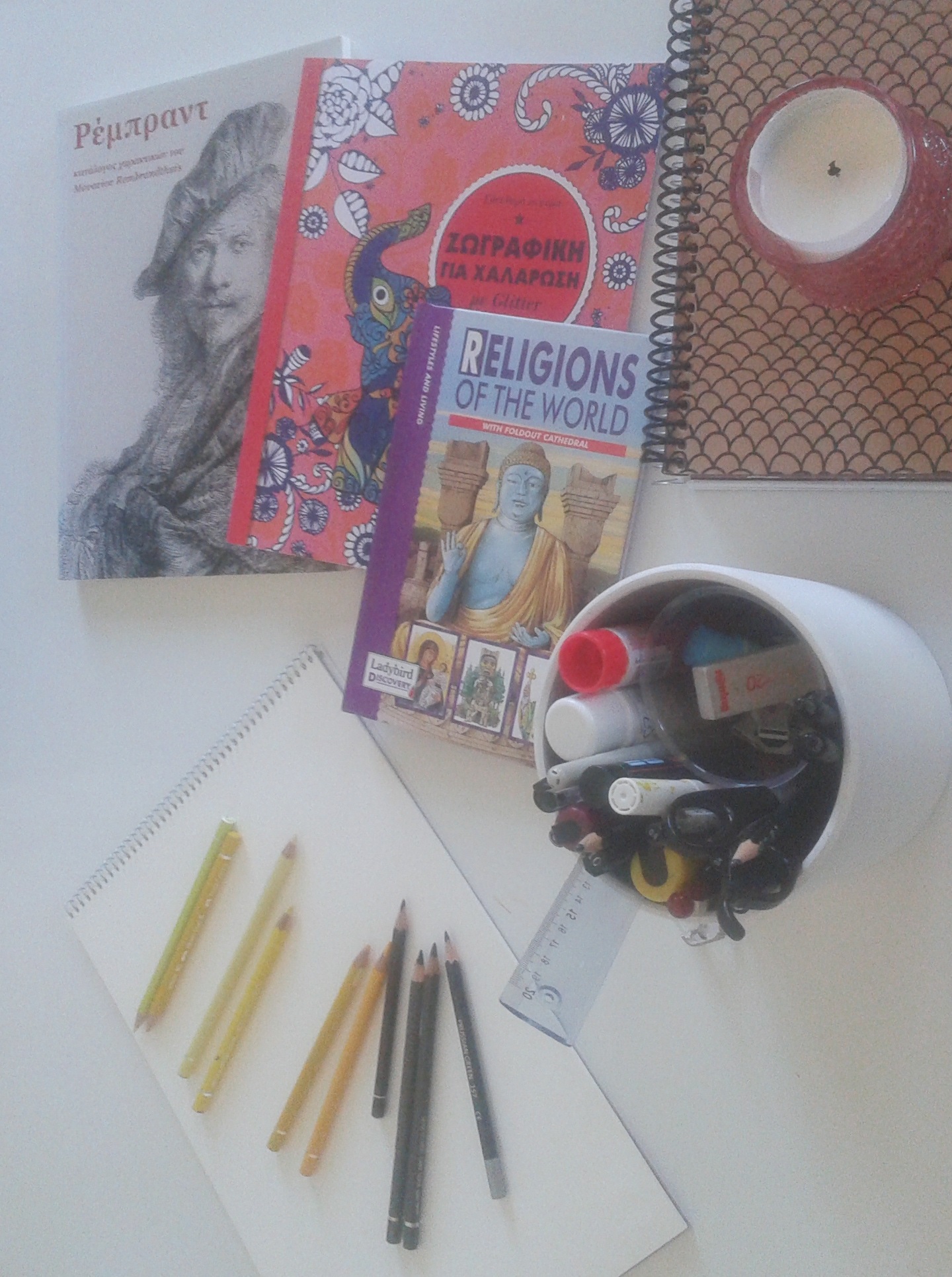Edited May 1st, 2023
“Sometimes your joy is the source of your smile, but sometimes your smile can be the source of your joy.” THICH NHAT HANH
“The difference between inspired medicine and uninspired medicine is love.” Sarah Ruhl
“I’ve never understood organizing world religions around the concept of guilt rather than around the concept of kindness.” Sarah Ruhl
“Be stone no more … She stirs … I thought: someday I will melt. Someday I will wake up.” Sarah Ruhl
Today’s post is about a book I’ve been reading, which I heard about on a podcast with Sharon Salzberg and Sarah Ruhl, and also, includes two new drawings.


The book I’ll be presenting today with the title smile: a memoir, is by Sarah Ruhl, playwright and writer of other things, as she herself notes, and is dedicated to the many doctors and health practitioners that helped her during a decade of health related upheaval. She writes: “This is a story of how I learned to make my way when my body stopped obeying my heart.” Although the book follows the thread of her journey from childbirth to Bell’s palsy, and finally, to the discovery of undiagnosed autoimmune conditions, it inevitably brings together multiple threads of her life.
She begins chapter three with the sentence “This is a chapter of boredom and entropy”. She writes about her Bed Rest period, the books she read, the bags of books her friends brought her, including many books that featured dead twins and dead mothers. Twins also represent symmetry and the idea of the lost self. She threw them out and wondered about the literary obsession with this topic. She writes about her knitting attempts, the letters she wrote to her young daughter and the yet unborn babies, the feeling of confinement and boredom, and how the idea of bed rest was influenced by John Hilton’s publication of Rest and Pain in 1863. The rest cure became very popular during Victorian times for a myriad conditions, but was finally put to rest when physicians realized that it didn’t help traumatized veterans regain their strength instead it wreaked havoc on them physically and mentally.
In chapter five, a day after giving birth, she introduces the theme of Bell’s palsy, a paralysis of the seventh cranial nerve, which the Greeks called “dog spasm”. Ruhl writes that in contemporary Western medicine there is not a lot you can do to treat Bell’s palsy; doctors generally give some steroids, and then one waits for the nerve to grow back, and often it does. However, there are often underlying causes that if taken into account can increase the chances of recovery. Ruhl writes: “I have since learned that a very attentive doctor at the onset of the illness will automatically prescribe you antivirals (many Bell’s cases are caused by a herpes virus), will also test you for Lyme disease (a large percentage of Bell’s cases…..are caused by Lyme), or treat you for Lyme disease as a precaution. This attentive doctor will also give you a script for physical therapy and tell you to eat plenty of antioxidants. My doctor did none of these things.”
The memoir also speaks of the writer’s religious faith and spiritual journey alongside her health related experiences. Ruhl was raised Catholic and in the book she narrates her doubts as she deals with her own health struggles and the uncertainty concerning her newborns, who begin their life in the NICU. She takes us to her childhood and her current refuge in certain Buddhist teachings, as she navigates this period.
A few short extracts that provide a glimpse into her experience, and also shows how things that happen to us early on, which might not be perceived as highly traumatic influence our lives nonetheless:
“In junior high school, Sister Linda was out sick and we had a substitute teacher for Sunday school named Mr. Ivancovitch. He was very tall, and looked a little how I’d imagine Ichabod Crane, with greasy black hair falling over his face and very thick spectacles. The day he took over Sunday school he decided to focus on the bodily suffering of Jesus. He talked at great length and in great detail about how the lungs would have been affected by being on the cross, how the nails would have ripped through the wrists. It made me afraid……
….. I told Sister Linda that I wasn’t ready to get confirmed. I had expected a rain of judgment from Sister Linda, but what I got was mercy, understanding, and gratitude that I had taken the vow so seriously. She smiled gently, told me I could come back to the church anytime, and let me go home……… The day after I dropped out of confirmation class, a small band of Catholic kids circled me on the playground. “What, do you think, you’re better than us?” …. “What are you now, Jewish?”………….
It took me two decades before I would read Thomas Merton and feel an affinity with Catholicism again, a faith that could be rescued from childhood tormentors, a faith that could be combined with other belief systems….. But that moment on the porch with the Hanukkah cookies probably shaped whole swaths of my life— the search for an ecumenical faith, the mistrust of institutions, the mistrust of certain kinds of girls…”

Ruhl writes about family, origins, belonging, about her husband, her parents and sister, and about her father who passed away in his fifties from cancer, untreated for celiac disease. We get glimpses of how they loved her and how they influenced her. For instance, she writes: “My father used to allude to what he called my mother’s “quick and darting mind.” My father’s mantra was that we girls must marry our intellectual equals, a mantra I wish more fathers would tell their daughters, and onstage my mother valued her intelligence over her image.” In relation to her mother she writes something that sounds true for daughters across the globe: “It’s hard to know where my mother ends and I begin. Isn’t that the story with so many mothers and daughters? I remember when I was little she taught me what a Venn diagram was. We were on a train, from Chicago to Texas, to see my cousins. In the dining car, on a napkin, my mother carefully drew two circles, showing me the overlapping section. “What do these two circles have in common? Here …” she said, pointing. I was fascinated by the logic of that diagram. Mothers and daughters: two circles, and the all-important bounded sections where they are complete unto themselves. Daughters perhaps have a tendency to point at the differences, mothers to point at the commonalities.”
As I mentioned, the major thread of the story, as the title itself denotes, is Bell’s palsy and all that is connected to that, which is every aspect of her life, the various underlying and undiagnosed health issues and reality. Ruhl begins by explaining that the Duchenne smile is considered the gold standard for a smile and it indicates a smile echoed by the eyes crinkling in response, Duchenne called the muscle that creates movement in the eyes during this smile the “muscle of kindness.” She tells us of her discomfort at being photographed, especially, once her smile became crooked. She writes: “At any rate, my general impatience and discomfort with being photographed pre-Bell’s turned, post-Bell’s, to fear and loathing.” She refers to the societal expectations for women to smile in public. She explores Bell’s palsy through the lens of vanity and asymmetry and wonders about what we do with life,which is asymmetrical and where we put all asymmetrical people with one leg, lazy eyes and crooked smiles….
I pondered how we take for granted many of our automatic responses like smiling. I smile frequently. It is something I don’t often think about. So, it was interesting to follow the unfolding of the smile narrative. She further wonders about Mona Lisa. Many people have wondered about her smile, too. Was Mona Lisa genuinely happy or sad? What did her smile reflect? Ruhl says that neurologists have observed that her smile is asymmetrical, expressing happiness on one side only and her eyes are not engaged in the smile. Who was she anyway? Was she a self portrait of Leonardo da Vinci or his lover? While I was drawing his portrait [see previous post] while i was looking at portraits of him it was apparent that there were similarities between his facial features and expression and that of Mona Lisa. Did she have a secret? She also writes about her pain at not being able to smile back at her three children and her concerns about the “still face” effect on them during these formative years. She wonders if babies can read the warmth of intention from a thwarted smile and of how to experience joy when you cannot physically express it. She worries that she might traumatize them or stifle their empathy development by not being able to sufficiently mirror them.
Ruhl explores the smile through multiple lenses. Scientists for instance, have found that we show more emotion on the left side, which is controlled by the right hemisphere of the brain, which regulates emotion. She makes reference to the findings of neuroscientists around brain neuroplasticity. She considers whether we can experience joy when we cannot express joy on our face. She asks: Does the smile itself create the happiness? Or does happiness create the smile? She writes: “This was not only a neurological question, and a Buddhist question, it was also a question for actors…” She explains how in the 1970s Ken Campbell developed an approach to acting using the two sides of the faces separately, which he called the enantiodromic approach. … The theory of enantiodromia is that the left and right sides of your face represent different personalities… Enantiodromia, according to the ancient Greeks, is a study of how opposites become each other …… I once bought a two -faced wooden puppet from a gift shop here on the island, which had a smiling expression on one side and a mean expression on the other, a kind of Dr Jekyll and Hyde persona. She explains how portrait painters create life and interest in the face through some kind of asymmetry and through dark and light. The sketches by Rembrandt that I have framed on my wall, souvenirs from a trip of long ago to Holland, with my sister and husband, remind me of this. A student of mine liked to draw faces dramatically split in two, very light on one side and very dark on the other.
She writes about the many health care practitioners she sought help from, the more and less inspiring ones. She tells us of one good doctor, who asked for details, was concerned about her health and her losing weight for no apparent reason, screened her for celiac disease, which is an autoimmune condition and can often go undiagnosed your whole life with dire long term consequences. She writes: “It strikes me that the difference between a good doctor and a less-than-good doctor is one part expertise and three parts quality of listening.” The last diagnosis of Lyme disease, which might have additionally triggered Bell’s palsy, comes from an unexpected source, a retired doctor, who offers his insight after reading about her experience online.
Finally, Ruhl ponders on the overuse of illness as a metaphor because we want to give our illness meaning, like we often want to give our suffering meaning, and says that if we give our illness too much meaning, we become the agent of our own decline. She quotes Susan Sontag, who has written that “Illness is not a metaphor, and … the most truthful way of regarding illness— and the healthiest way of being ill— is one most purified of, most resistant to, metaphoric thinking.” Towards the end of the book Ruhl evaluates her experience of Bell’s palsy and writes: “…that paralysis ended up revealing a potentially life saving diagnosis that affected my whole family…. Maybe Bell’s palsy was a tremendous gift.”
Ultimately, as she engages with living, bringing up children, writing, visiting doctors and trying different healing modalities, she seems to also awaken more to her life and reality. After she watches The Winter’s Tale by Shakespeare she writes:
“I wondered, as I watched The Winter’s Tale: Is Hermione meant to be a real woman or just a metaphor for art? …. ..It is not the husband who wakes the wife, but the woman’s friend…… Be stone no more … She stirs … I thought: someday I will melt. Someday I will wake up.”
